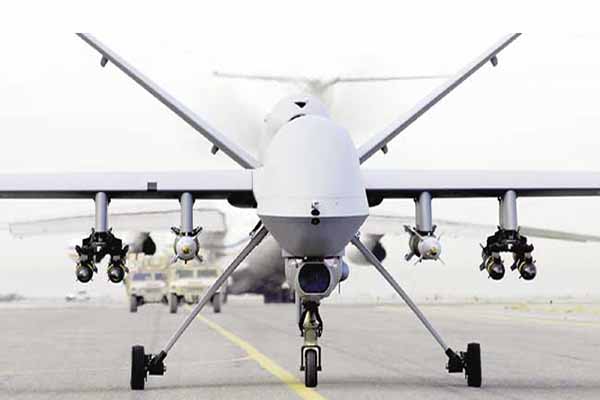UAVs or Unmanned Aerial Vehicles are aircraft that are operated remotely without a human pilot on board. They are equipped with sensors, cameras, and other technology that allow them to perform a variety of tasks, from aerial photography and surveying to search and rescue operations. UAVs have become increasingly popular in recent years, thanks to advances in technology that have made them more affordable and easier to operate. They are used in a wide range of industries, including agriculture, construction, and filmmaking, and are also used by the military for reconnaissance and surveillance. One of the key benefits of UAVs is their ability to access areas that are difficult or dangerous for humans to reach. For example, they can be used to inspect power lines and wind turbines, or to survey areas affected by natural disasters. They can also be used to monitor wildlife populations and track the movements of endangered species. In the agricultural industry, UAVs are used to monitor crop health and identify areas that require irrigation or fertilization. They can also be used to map fields and create 3D models that can be used to optimize planting and harvesting. In the construction industry, UAVs are used to survey construction sites and create 3D models that can be used to plan and manage projects. They can also be used to inspect buildings and structures for damage or maintenance issues. In the filmmaking industry, UAVs are used to capture aerial footage that would be difficult or impossible to obtain using traditional camera equipment. They can be used to create stunning aerial shots of landscapes and cityscapes, or to capture action sequences from unique angles.
Challenges Posing UAV Industry
Despite their many benefits, UAVs also pose some challenges. One of the biggest challenges is ensuring that they are operated safely and responsibly. UAVs can pose a risk to other aircraft and to people on the ground if they are not operated properly. There have been several incidents in which UAVs have collided with other aircraft, and there have also been cases of UAVs being flown in restricted airspace.
To address these concerns, governments around the world have implemented regulations governing the operation of UAVs. In the United States, for example, the Federal Aviation Administration (FAA) has established rules for the operation of UAVs for commercial purposes. These rules require operators to obtain a remote pilot certificate and to follow certain safety guidelines, such as flying below 400 feet and keeping the UAV within visual line of sight.
Another challenge facing the UAV industry is the development of technology that can detect and avoid other aircraft. This technology, known as sense and avoid, is essential for ensuring that UAVs can operate safely in airspace shared with other aircraft. There are currently several companies working on developing sense and avoid technology, and it is expected to become more widely available in the coming years.
UAVs in India – Startups Flying High!
UAV technology is becoming increasingly popular in India. Drones are being used for a variety of purposes, including aerial photography, surveying, agriculture, and even delivery services. The Indian government has also been exploring the use of drones for various applications, such as disaster management and surveillance. Overall, the use of UAV technology in India is on the rise and is expected to continue to grow in the coming years.
In FY2022-23, drone start-ups attracted $49.7 million in investments across 20 rounds, compared to $25 million received in FY2021-22 across 23 rounds. The figure for FY2020-21 was $11.2 million across 20 rounds, according to data from the research firm Tracxn Technologies.
Besides, finance minister Nirmala Sitharaman announced the Drone Shakti Scheme as part of the proposals the Union Budget 2022 proposals. The scheme seeks to unify the efforts of the drone ecosystem through the institutionalisation and creation of a structure to enable synergies among multiple stakeholders.
Subsequently, a Rs 120 crore Production Linked Incentive (PLI) scheme was also approved for the segment in the same year.
In 2022, the Pune-headquartered company DroneAcharya was the first Indian drone player to go public.
Garuda Aerospace, a multi-utility drone manufacturer raised $22 million in the Series A round, out of which $17 million was raised in February this year, which is almost equivalent to the total funding raised by the Indian drone market in the 2021 calendar year.
In February, the Qualcomm-backed drone start-up ideaForge filed its Draft Red Herring Prospectus (DRHP) with markets regulator Sebi for an IPO. The offering comprises a fresh issue of shares worth Rs 300 crore and an offer for the sale of 4,869,712 equity shares.
Indian UAV Policies & Reforms
In June 2021, India’s Ministry of Civil Aviation (MoCA) released a new set of drone laws and regulations for anyone operating an Unmanned Aerial Vehicle in India. According to the new rules, operating a UAV will require applying for and receiving a unique identification number, unless the operator is granted an exemption. In order to receive this identification number, UAV operators will be required to submit details on the Digital Sky platform, which is a MoCA-led initiative to manage UAV operation and traffic in India. Some Indian state governments have also crafted unique UAV policies to attract investments in this sector.
Opportunities of UAVs in the Indian Market
As with the global market for UAVs, the Indian market is segmented into three main categories: Original Equipment Manufacturers (OEM), End Users, and Aftermarket. The available types of UAVs include rotary wings, fixed wings, high-altitude long-endurance (HALE), medium-altitude long-endurance (MALE), and unmanned combat aerial vehicle (UCAV). Apart from manufacturing, opportunities exist in the areas of hardware, software applications, and value-added components.
The commercial UAV market is currently experiencing exponential growth, becoming more widely utilized in the following sectors in India: agriculture, forestry, mining, power, railways, construction, highways, e-commerce, homeland security, smart city and urban development projects, and media. Applications include site inspections, surveillance, and monitoring to capture and disseminate real time data.
In the defense sector, there are opportunities for anti-drone system, specifically, in the areas of sensors, phased array radar, Radio Frequency (RF) sensor, electro optical and infra-red (EO/IR) systems, navigational satellite jammer systems, and RF jammer and laser directed energy weapon (Laser-DEW) systems. The requirement of anti-drone systems has further enhanced after the recent UAV attack on the Indian Air Force station in Jammu. In addition, there is scope in the areas of border security, counter insurgency and crime control, and anti- terrorism applications.
Policy for UAVs in India
- The policy landscape for UAVs in India creates some challenges hindering potential end users from maximizing the usage of UAVs in their operations.
- The current drone rules note that all UAV importers are required to obtain a “Certificate of Manufacture” followed by an application to the Directorate General of Civil Aviation (DGCA) via the Digital Sky platform. Upon approval from DGCA, the importer must apply for issuance of an import clearance certificate to the Directorate General of Foreign Trade (DGFT). Import of unmanned aircraft vehicles/systems shall be regulated by the Directorate General of Foreign Trade (DGFT).
- International suppliers may need to invest in training and certification programs to impart the necessary skills to operate their UAVs in India. It is important to build up this infrastructure to ensure that the industry is not bottlenecked with supply issues.
- “Make in India” incentives, including relaxation of FDI regulations may encourage international suppliers to enter joint ventures or invest in manufacturing or assembly of UAV’s in India. This will add local competitors to the already burgeoning landscape of indigenous manufacturers, making it more challenging for international OEMs to compete on price.
Conclusion
UAVs are a powerful tool that has the potential to revolutionize a wide range of industries. They offer a cost-effective and efficient way to perform tasks that would be difficult or impossible using traditional methods. However, it is important to ensure that they are operated safely and responsibly, and that regulations are in place to govern their use. With the right approach, UAVs have the potential to transform the way we live and work, and to create new opportunities for innovation and growth.















